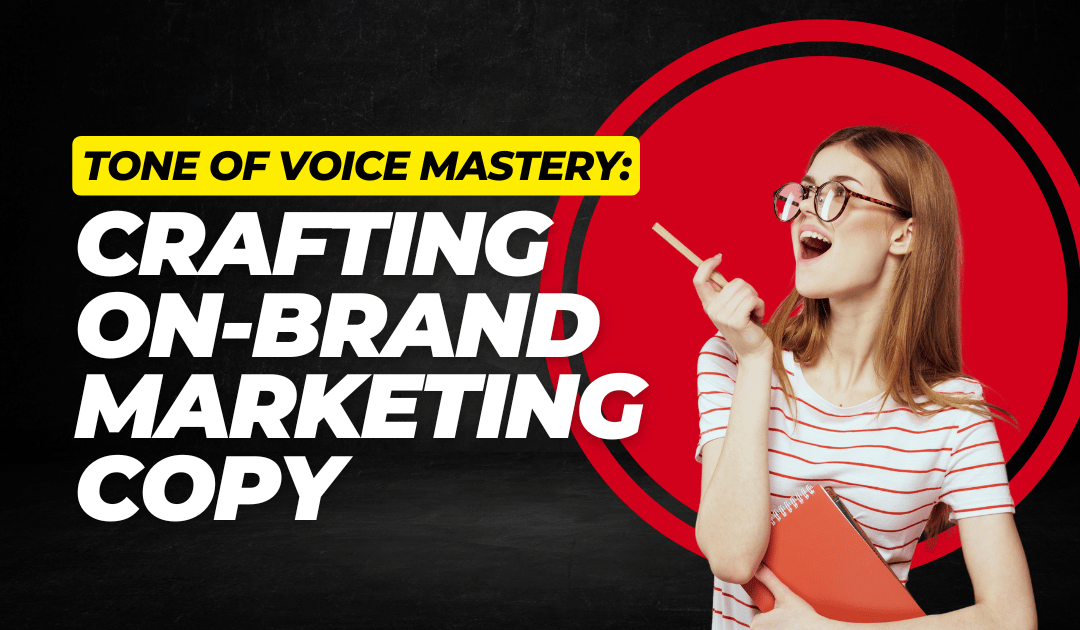Tone of Voice Have you ever heard that a brand can speak?
Consider your brand as a person, and if I say to your brand you please introduce yourself in front of the public, how would it introduce itself?
- Option 1: Would your brand act as a funny one who cracks jokes?
- Option 2: Or does it act as an expert with a high knowledge level?
Brand voice acts like people, shaping how people consider your brand.
Whether you are writing copy for a social media post, letters, emails, or web copy, remember that your brand voice should be consistent across all platforms.
I have been working as an expert copywriter for five years. I have seen the Tone of Voice and tone often misunderstood, and less practical help is available to master this skill.
This blog is beneficial for you, especially if you are a blogger, business owner, marketer, intermediate copywriter, or even a beginner passionate about learning copywriting.
Because in this blog, I am going to share very useful practical tips and a set of unique tools that will help you master your own brand voice.
By the end of this blog, what have you learned?
- Using the active voice creates a friendly voice.
- How can you write clearly by splitting sentences?
- How can you cite the evidence to develop a knowledgeable voice?
- How to use passive voice to solve a user’s problem.
So, are you ready to unlock the secrets of brand voice?
I know your answer is Yes 😀
So, without wasting time, let’s start.
Understanding Tone of Voice, what is it 🤔 ?
So here in this section, you will understand:
- What does it mean by Tone of Voicee?
- What is the difference between each Tone of Voice?
- Why are tone and voice both important?
- What will happen if your Tone of Voice go wrong?
So let’s discuss each in detail.
I know you have heard the term tTone of Voice very often. Because they are used interchangeably, most people get confused.
The difference between tone and voice is simple:
Tone: You change your tone according to the situation. For example, when you discuss something with a close friend, you use a totally different tone than when you are in an important meeting.
Voice: But your voice always remains the same throughout any situation.
The same scenario applies to the brand voice, which should almost always be the same.
Usually, however, the brand’s tone is flexed according to different audiences and circumstances.
All big brands have their own brand tone of voice guidelines. Essentially, these guidelines describe the tone of the brand, but the voice of the brand always remains the same.
Voice is essential for every brand because it is integral to its personality. Consider how you speak, cut your hair, dress, and express yourself as a reflection of your personality.
The same goes for the brand. It shows its personality through its logo, colors, visuals, and the way it speaks—the voice of the brand.
Every brand wants these elements to be consistent throughout because they make the brand trustworthy, familiar, and credible.
A brand’s Tone of Voice are very important in making a difference in a competitive environment because they help brands build authentic and coherent identities.
Remember, a brand with a consistent brand voice helps its customers recognize it easily and also fosters the brand’s trust and loyalty.
Let’s take an example of the ad: what happens if the Tone of Voice go wrong?

- The ad’s headline and sub-headline are written in casual language.
- On the other hand, in the body of copy written in a formal voice, many outdated phrases are used, such as “garments, purchase, forthcoming, and delighted to announce.”
- Mixing tones, formal and informal, creates confusion in the brand message.
- The body copy addresses the third person, while the subheading addresses the first person. Inconsistency can make the brand seem disjointed and unreliable.
- As a result, the ideal customer may feel disconnected, which hurts the brand’s reputation and relationship with its audience.
If you are working with your client or your own brand, you must have brand voice guidelines in your hand.
Mostly, brands have it in the form of a document, but in the worst case, if there is no brand voice guideline, so in this case, do research and look at brand characteristics and personality traits.
By looking at them, you can easily create a brand voice.
Let’s take an example of a fashion brand that doesn’t have its brand guidelines, so here is how you might be processed:
Research the Brand’s Characteristics and Personality Traits:
Characteristics: Innovative, trendy, eco-friendly
Personality Traits: Fun, approachable, bold
Define the Brand Voice Based on These Insights:
Voice: Friendly, modern, and confident
Tone: Casual and playful for social media; supportive and informative for customer service; bold and inspiring for marketing campaigns.

Write Clear Voice
In this section, I will cover how to write straightforwardly and clearly. A clear Tone of Voice allows you to communicate effectively, and it is included in most brands’ voice guidelines in some form.
Such as it is referred to as honest, simple, sometimes to the point or direct, plain spoken, or clear.
Well, it’s referred to in any way. The idea is to make your message simple for readers and avoid confusion or ambiguity.
To make your writing style clear, you should follow three great techniques.
- Being more direct.
- Improve clarity.
- Split long sentences.
Being more direct
In order to write in a clear voice, the first technique that will help you is being more direct. You can do this by cutting out adverbs. Adverbs mostly add unessential clutter to your writing. If you remove them, you can make your copy more impactful and direct.
Let’s discuss an example of the wrong and right form of this technique:
Wrong: The team worked really hard to complete the project very quickly.
Right: The team worked hard to complete the project quickly.
Focus on an example notice by cutting out really and very how the sentence becomes more powerful and straightforward.
Improve clarity
Use the kiss rule to keep your brand voice simple and sweet. Complexity confuses people. Always ensure clarity in your voice, and it should be understandable to a common person.
Let’s take an example. Just focus on the wrong and right sentences:
Wrong: The utilization of our new software facilitates an enhanced workflow.
Right: The use of our new software improves workflow.
You can see how the sentence becomes simpler by replacing the two words “use, improves” with three words: “utilization, facilitates, and enhanced. “
Split Long Sentences
Ensure your message delivery is not written in long paragraphs because this practice messes up your work.
Make your message easy to digest. Break long paragraphs into short paragraphs, write no more than three lines long paragraphs, and use bullet points and a number list to enhance the readability of your message.
Write in a warm voice
Warm voice is one of the other characteristics that is mentioned in most of the brand’s voice guidelines.
This helps you maintain an approachable and friendly Tone of Voice in your brand guidelines. Sometimes, it’s referred to as human or real, informal, or conversational or informal.
Never confused with different referred words. The idea is the same. They are referring to a warm Tone of Voice.
Three techniques help to craft a warm voice:
- Active voice usage.
- Use of You and I.
- Asking questions.
Active voice Usage
The active voice makes you sound natural because it puts the subject in the forefront of a sentence. In simple words, in the active voice, the subject performs the action stated by the verb.
On the other hand, in the passive voice’s sentence, the subject is acted upon by the action.
When you write in an active voice, your voice becomes dynamic. This engages your audience because it makes sentences more direct and clear.
Let’s take an example of active and passive voice; it will clear your confusion.

Focus on the difference in active voice. Who is in the spotlight? The answer is (the doer) speaker. It makes this sentence more engaging and impactful.
Use of You and I
Use “You “and “I” to personalize your writing. This helps build a sense of connection with the reader.
Let’s take an example by using the wrong and right sentences:
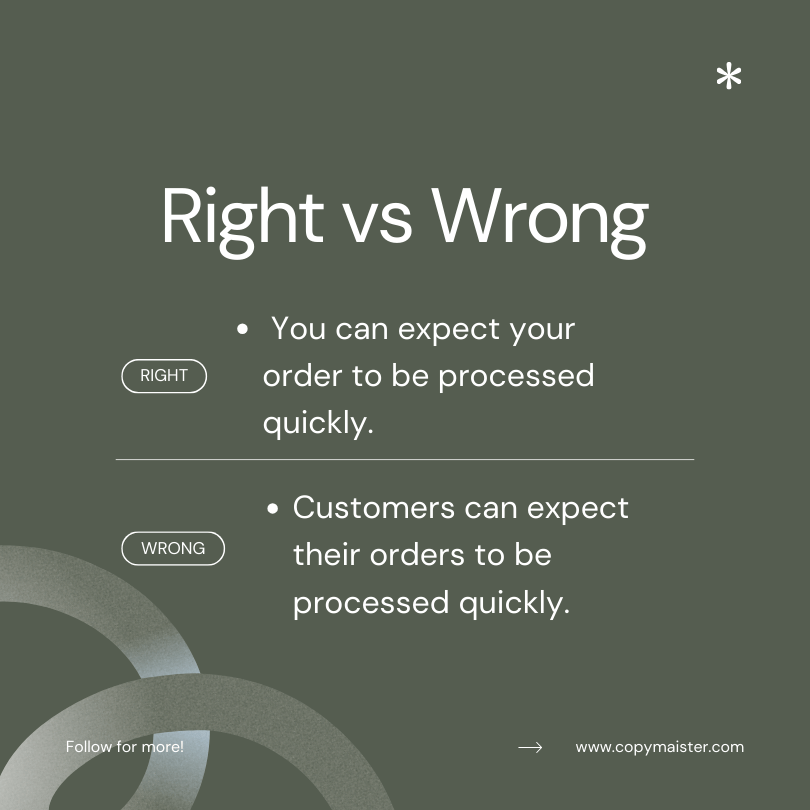
Just focus on how using “you” and “your” in a sentence makes the sentence feel more engaging and personal.
Asking Question
The asking-a-question approach is one of the best ways to create a sense of conversation. It also sparks curiosity in the reader’s mind and gives them a sense of involvement.
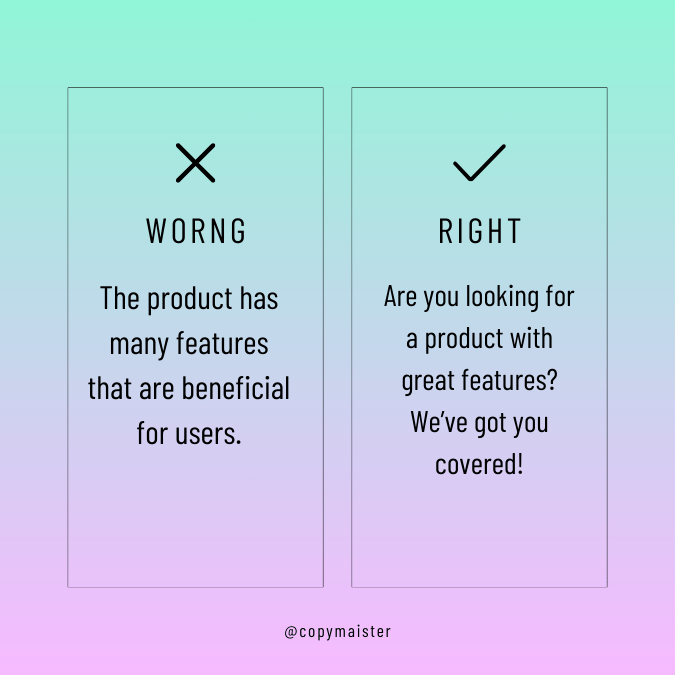
You can notice that the sentence, which is based on a question, directly draws the reader’s attention and fosters a sense of connection.
Write in a Knowledgeable Voice
A knowledgeable voice helps you build trust and credibility in the reader’s mind. In many brand voice guidelines, it is referred to as expert or thoughtful, sometimes as businesslike or trustworthy, and sometimes as knowledgeable.
Whatever it is written in any form, the idea is to increase credibility and reader trust.
Let’s discuss three techniques that help you build a knowledgeable Tone of Voice:
- Provide Evidence.
- Linking features to benefits.
- Share a success story.
Provide Evidence
Demonstrate your credibility by providing evidence that helps you in supporting your claim. Many sources are available to provide proof, such as research findings, case studies, or expert testimonials.
Linking Features to Benefits
One of the best techniques for sounding knowledgeable is linking features to benefit a feature as an aspect of the product and explaining what’s in it for the customer.
It helps your audience understand the value you are offering, and they can relate their needs to how you are meeting them.
Let’s take the example of Swiftsole:
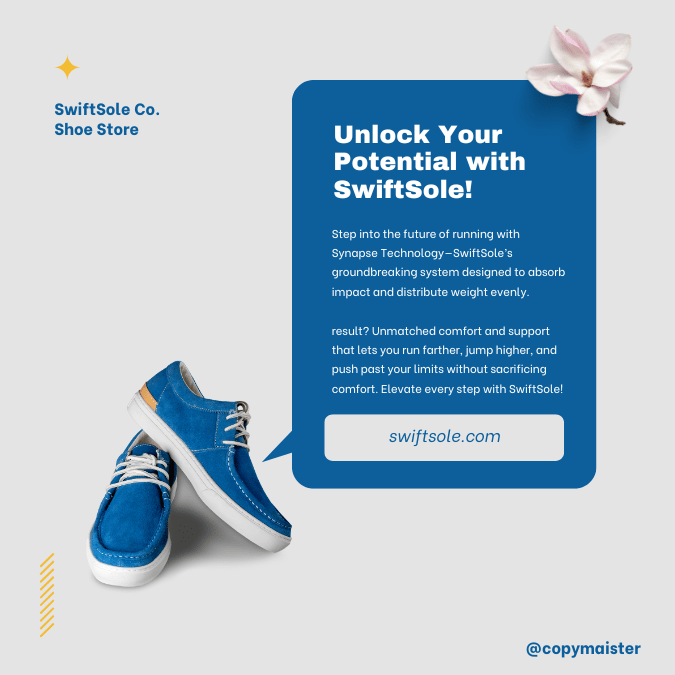
The ad introduces the feature (Synapse system) with its function (impact absorption, weight distribution) and connects it to the benefit: “unmatched comfort and support” for enhanced performance. This clear link makes the technology relevant to the runner.
Share a success story
Sharing a success story of satisfied customers is one of the best ways to build trust because this way, people with the same problem can relate to the same person who had the same problem.
Let’s take an example of the brand name Zensleep:
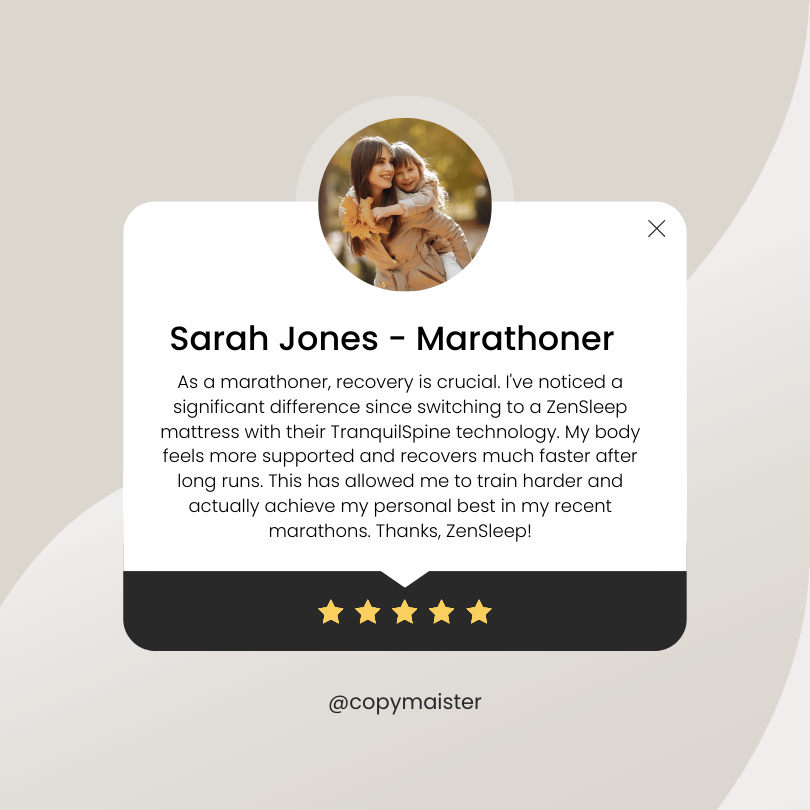
Write in Positive Voice
A positive voice helps to create a sense of encouragement, uplifting and fostering a connection with your target audience.
In the brand voice guide, it is sometimes referred to as energetic or dynamic, inspiring, fresh, spirited, or upbeat.
No matter how it is mentioned, the idea is the same: You just have to put energy into it and use your voice to transfer enthusiasm to your reader.
Three techniques help to write in a positive voice:
- Convert negative into positive.
- Solve the reader’s problem.
- Overcome Objection.
Convert negative into positive
Crafting information positively, not negatively, is essential because your readers want to know what to expect when using your brand.
They know their problem, so do not feel regret by mentioning too much where they are lacking.
You need to demonstrate empathy and address their problem to show you understand their needs. It will help you build trust.
Let’s take an example:
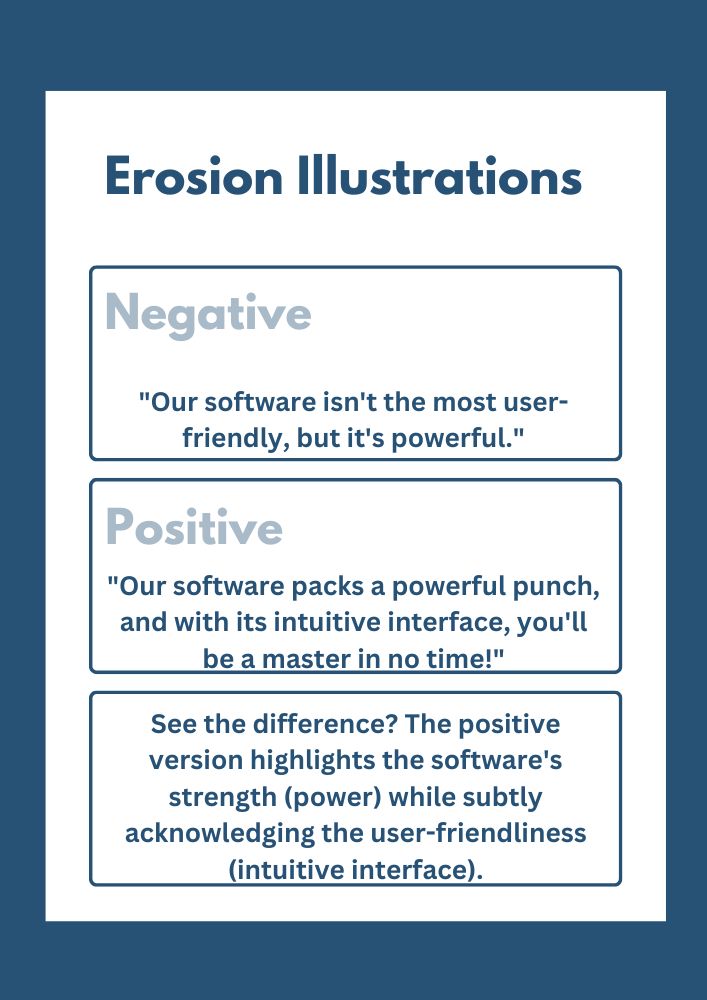
Solve Reader’s problem
Position yourself as a helpful guide who addresses your target audience’s problems. Just let them know what pain or problem they are facing, and then offer a solution to that pain or problem.
Let’s take an example:
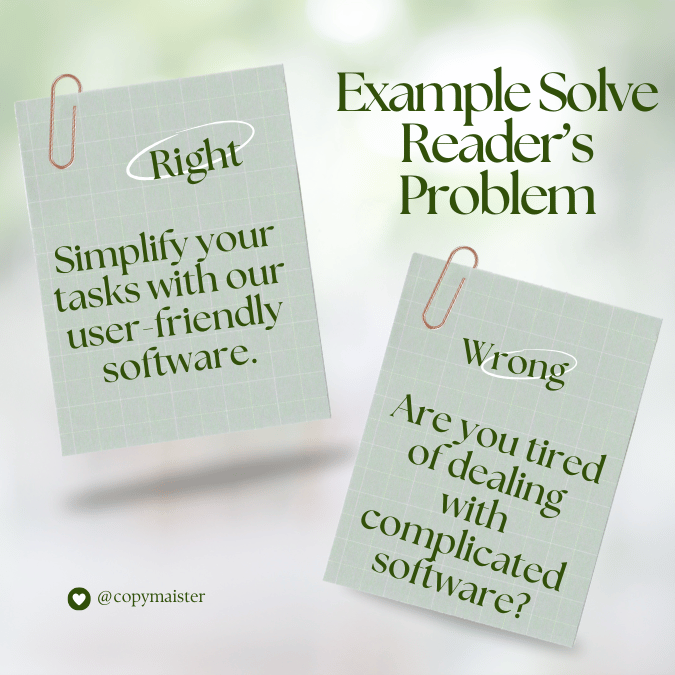
Focus on the right form of the sentence: how attention shifts from the problem (dealing with complicated software) directly to the solution (user-friendly software).
Overcome Objection
By overcoming your target audience’s objections, you can address their valid potential objections, which helps you to build positive relationships with them.
Let’s take an example:
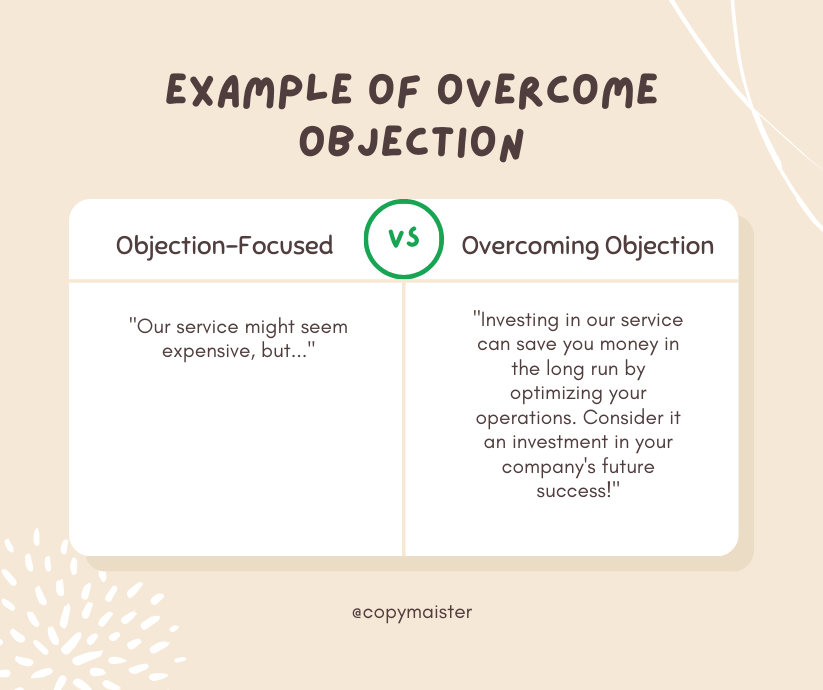
Addressing the concern can help you maintain a reassuring tone in a positive way, which will help build trust and encourage your target audience to take action.
Write in a Humorous Voice
Humorous voice is the powerful way to engage reader and it’s makes your content memorable it is referred in lots of brands voice guide in different forms such as sometimes as a quirky or witty, and sometimes as a playful or fun.
The idea is the same: just make people laugh or at least smile while looking at your content.
Three techniques will help you to incorporate humor:
- Write a witty headline.
- Unexpected introduction.
- Use a Word Play.
Write a witty headline
A witty headline helps a lot in getting attention and entice readers to read more. The headline is the first impression for readers. If it is written in a witty format, it makes brands more relatable, memorable, and fun.

Unexpected introduction
In this technique, you just need to add a little twist or unexpected element to keep the reader on their toes. This helps to amuse and surprise your reader and keeps your content engaging and fresh.

Use a Word Play
Use wordplay to give your message a Playful feel. You can do wordplay by puns and adding clever turns of phrases. It makes your message enjoyable for the reader to read.
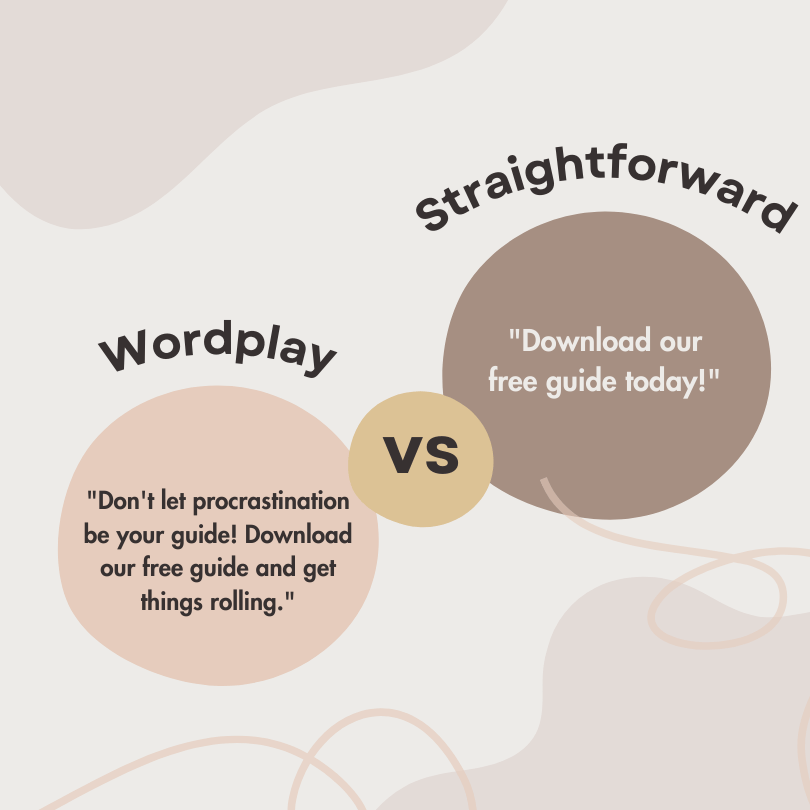
Flex your Tone
As I discussed at the start of this blog, the brand’s voice remains the same all the time, but if I talk about the tone, it should be flexed to cater to different circumstances and audiences.
Your brand voice is up and down depending on different context in this section i am going to focus on how you can adapt tone to suits different platform, audiences and situations.
Let’s take an example of Nike how this brand adapts tone on different platforms:
Instagram:
Example: Nike’s Instagram posts often feature high-quality images and videos of athletes, both professional and amateur, overcoming challenges and achieving their goals. The captions are short, punchy, and designed to inspire action and confidence.
Caption Sample: “Push through the pain. Every step counts. #JustDoIt”
Twitter (X):
Example: On Twitter, Nike engages with trending topics, responds to customer inquiries, and shares updates about product launches and events. The tone is concise, with a focus on immediacy and relevance.
Tweet Sample: “Ready for a new challenge? Gear up for our latest collection. Available now! #NikeNewArrivals”
Conclusion
So, this blog is now finished. I hope you have a clear idea about tone and voice. Mastering this concept is very important in crafting attention-grabbing copy.
In this guide, I have discussed multiple brand voices, including clear, warm, knowledgeable, positive, humorous, and flexible.
Mastering these can create a strong connection between your brand and your audience. Just remember one thing: you should be impactful and consistent across different platforms.
So that’s it for now. Thanks for reading. If you have any questions related to this blog, feel free to send me an email.

